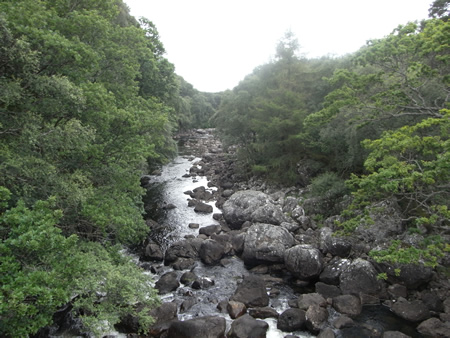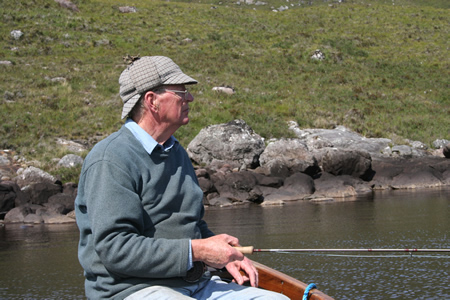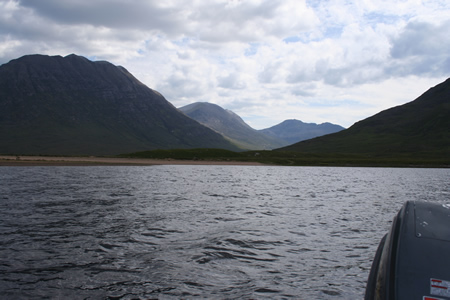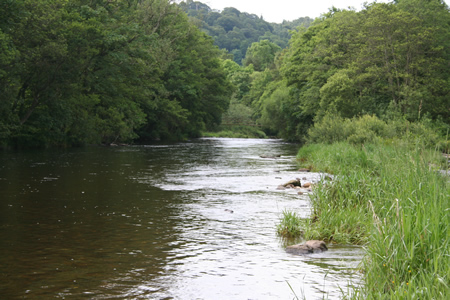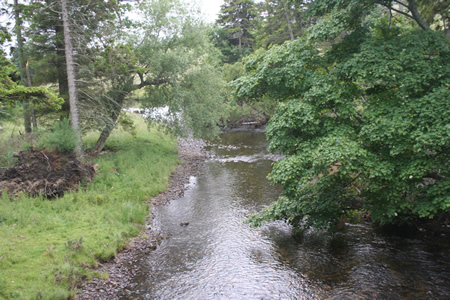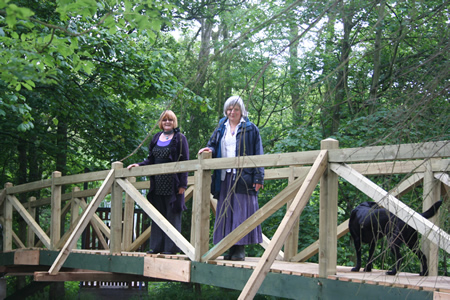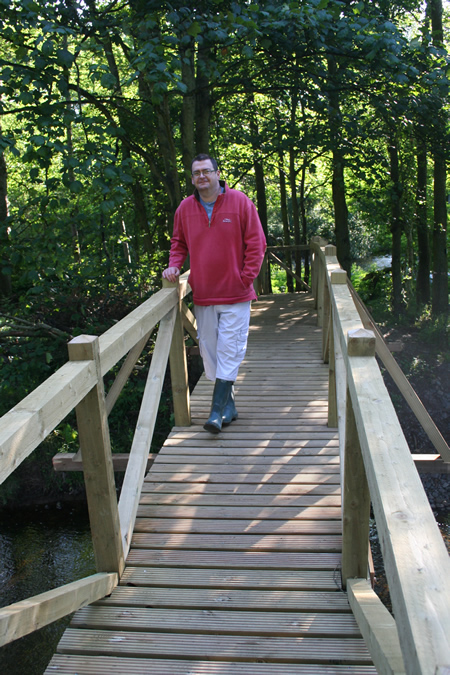These bulletin blogs represent news about Finavon and the South Esk, and my views as a riparian owner. They are not the views of any other organisation, nor are they designed to promote the interests of any individual or organisation other than Finavon Castle Water and factors affecting the fishery. Tony Andrews
The last three weeks have marked the transition from early summer to high summer. With water levels now dropping away after nearly two months of relentless rain and fluctuating conditions, the fishing has become quite hard going. However our visiting anglers have done reasonably well by chalking up two or three salmon/grilse and a few sea trout each week.
The sea trout runs are more-or-less over for 2011, and the grilse have yet to arrive in any numbers. It is surprising in these circumstances that there are still a few MSW salmon entering the river, and the odd grilse among them. I am hoping that the main grilse run is yet to come, but it is worth noting that traditionally a very high proportion of grilse caught in the South Esk district are killed by the coastal nets (over 85% in recent years). Because the Usan nets are a mixed stocks fishery we have no idea how many of the grilse killed by the nets belong to other rivers on the east coast, and how many to the South Esk itself. Suffice to say that I work on the basis that about 60% of the total catch of Usan nets originate in the South Esk catchment.
August is the season’s transition month. By the end of August, given good water levels, we can expect to see some autumn MSW salmon entering the river, hopefully in the company of increasing numbers and quality of grilse. It is only three seasons back that FCW had a catch of 93 salmon and grilse in August. Water is the key, but there also has to be fish in abundance for a catch like 2008 to occur again.
As the water has drained away we are seeing brilliantly clear water, every pebble on the bed of the river and, if there were any sea trout left behind, we would also be seeing the occasional small shoal. But, bar the odd old stager spring fish, the occasional grilse head and tailing in the streams and, at dusk, some bigger fresh salmon showing in the pool dubs (Red Brae, Indies, Melgund, Tyndals and Tollmuir Pool), the pools are clear of bigger fish. But every pool and stream shows an abundance of parr, and in the middle of every day there is a frenzied rise of these little fish – the future generations of South Esk sea trout and salmon. There is little doubt in my mind that the river is in good heart and that its main stem and tributaries are providing habitat for large numbers of juveniles of both species. Living on the banks of the River, as I do, the sight of so many young fish gives grounds for optimism, and not a little happiness!
So, what are the prospects? I said earlier that it all depends on the amount of rain we get in the next three months. Ideally we need a steady series of mini spates with time between them to allow running fish to settle into the pools. But we also need one or two big spates in the period, especially in August while the Usan nets are still operating ( the netting season ends on 31 August) because the chemical call (scent) from a flood entering the sea through Montrose Basin has the effect of bringing the fish into the relative safety of the river, avoiding the nets as they do so. A wet August, followed by good water levels and a minimum of droughts in September and October should work well for our autumn visitors.”
The missing ingredient is of course the fish themselves. Judging from the quality and abundance of MSW salmon returning in the last two seasons we have grounds for optimism (yet again!).
